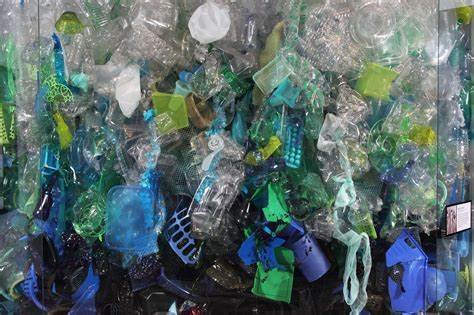By Clare Auld-Brokish, Angela Pan, Yunyi Huang, Tonxin Zhu and Karen Mancl
The Wilson Center published a recent study says that
Over half of the 8.3 billion metric tons of plastics produced from 1950 to
2015 have been manufactured since the year 2000, of which a majority was
used in packaging. The current model for plastic packaging is linear: from production and single-use
to irretrievable disposal. Promoting recycling is often touted as key for achieving circularity, simply turning
plastics into other plastics. However, in 2016, only 21 percent of the plastic produced was economically
recyclable, and only 15 percent was actually recycled. The rest ended up in landfills, incinerators, and the
natural environment.
As the world’s largest consumers and producers of plastics, the United States and China are pivotal for
helping to close the loop on global plastic waste. For years the main narrative has been that China, Indonesia, the Philippines, Thailand, and Vietnam are responsible for most of the ocean plastic leakage in the
world. However, recent studies, such as the National Academy of Sciences’ Reckoning with the U.S. Role
in Global Plastic Waste, indicate that the United States is the world’s largest generator of plastic waste and
has one of the lowest recycling rates (9 percent) of any industrialized country.
The Intertwined Plastic Waste Footprint
The United States has a well-functioning waste collection and sorting infrastructure system. However, for
decades it has shipped half of its recyclables (plastic, glass, etc.) overseas to China and other countries that too
often lacked the infrastructure to recycle them, significantly contributing to the global plastic pollution crisis.
In 2018, China’s National Sword Policy banned the import of plastic waste. For nearly 40 years, China had
used these imports as industrial feedstock, but the boom in E-commerce and food delivery companies in
the early 2010s caused packaging waste to rapidly pile up. As part of the government’s war on pollution,
Chinese policymakers launched domestic waste management reforms and introduced policies to reduce
single-use-plastic.
After 2018, Southeast Asian countries also started to turn away waste exports from the United States and
other western countries. Many U.S. cities were subsequently forced to store recyclables in warehouses until
they could be incinerated or landfilled. The lack of markets for recyclables led many U.S. cities to cancel or
reduce their recycling programs. In response, U.S. policymakers passed or debated more stringent state
and federal legislation to reduce plastic and other single-use packaging.








